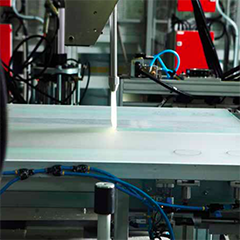We’re delighted to welcome back François Bertero, Global Solar Market Manager for Dow Corning to the magazine – in what has been a momentous 12 months for the silicone specialists. The globally-recognised manufacturer has driven a new agenda that has taken in an increased focus on innovation and an ambitious expansion programme…
PES: We see that the company launched and showcased several novel silicone-based solutions at SNEC last year. Could you run through them for us? How have these been performing?
François Bertero: Dow Corning develops and manufactures materials and applications for solar PV from feedstock to module assembly and installation. And by leveraging the power of silicone, with over 70 years of experience, Dow Corning is committed to helping bring more powerful and reliable PV systems that can quickly achieve a lower Levelised Cost of Electricity (LCO).
At SNEC 2014, we introduced our PV-6212 Cell Encapsulant, an optically clear silicone encapsulant that provides a high transmission of light to the solar cell and superior reliability and durability for modules – allowing high performance in PID (Potential Induced Degradation) resistance. This technology was jointly promoted with BYD during different industry events in 2014 and 2015 and has been well adopted by the market.
We are also very happy about the performance and success of our recent Sealant and Potting Agent – latest additions to the Dow Corning broad frame sealants and potting agent families – confirming the company’s ability to continuously bring new benefits to customers through innovation.
PES: When we spoke in 2014, you mentioned that it was a crucial year
for the company. Did you meet your expectations?
FB: Yes we did! 2014 was a year of actions with successful product launches validated by the market.
In addition to the Cell Encapsulant success, our Electrically Conductive Adhesive (ECA) has been approved by key equipment manufacturers for back contact technology.
Dow Corning PV-5802 Electrically Conductive Adhesive is a high performance and reliable silicone-based ECA for assembling the PV module’s back contact, which helps increase long term sustainability and reduces the overall cost.
The potential of the technology goes beyond the back contact cell and could bring benefits for our customers for other type of modules. This was discussed during the last EU PVSEC conference.



























